



MOI Scoop
Brand
Ads
Storytelling
Design
Trends
ISSUE #23
Oct 25
THE ‘PRINT’ ISSUE


MOI Global creatives are often asked where we get our inspiration. The answer is always the same: anywhere and everywhere.
Take a stroll through this set of head-turning art, copy, ads, literature, culture, and trends that inspire us. And some of our original work that proves we take notice of what we see, when we look around. Features images and articles from multiple online sources, shared for inspiration purposes only, not commercial use. © various owners (see URLs throughout for more information).
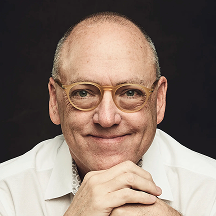

David is a marketing expert and former academic who has led firms, spoken at TEDx, and written for major publications. Based in Nashville, he now shares insights through Punctuation, reaching thousands weekly.

MOI: What do you think it takes to consistently turn heads in marketing?
David: Mainly I think it’s having a thoughtful point of view that’s not a hot take kind of thing. Just a unique perspective, tentatively held. People want confidence but not arrogance. They want you to believe in what you say, but always be open to learning. I am completely myself in the nearly 3 million words I’ve put out there in books, weekly articles, 7 years of podcast episodes, etc. Trust, authenticity, and being honest about what you do not know. Those are the things that people notice in a human to human exchange.

MOI: What's a common trap you see agencies fall into when trying to stand out?
David: Bullshit claims that are just the cost of doing business. They claim things for which no one is claiming the opposite. Like, “we have a proven process,” or “we have the best people,” or “we do strategy first,” and a dozen others. Really? Like other people are not doing those things? It amazes me that the industry most likely to help brands and products differentiate themselves tightly are remarkably bad at following their own advice!

MOI: What's one piece of advice you wish more businesses actually followed?
David: To not grow for the sake of growing, but to instead size your firm based on two critical things. First, the degree to which you want to be in the people business vs. being on the front lines. Second, size your firm so that your capacity is always less than your opportunity. The gap between those two things represents your ability to say “no” when the client is not a fit or your expertise isn’t appropriate. And if there’s a mismatch between those two things, quickly adjust your capacity while you work on the longer play of increasing your opportunity. You aren’t running an orphanage and your job is to make tough decisions.
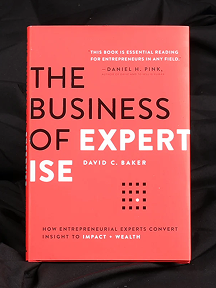
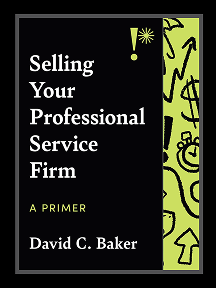
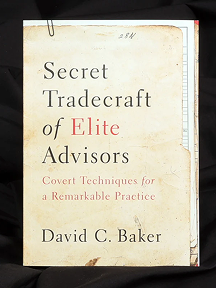


David is a marketing expert and former academic who has led firms, spoken at TEDx, and written for major publications. Based in Nashville, he now shares insights through Punctuation, reaching thousands weekly.

MOI: What do you think it takes to consistently turn heads in marketing?
David: Mainly I think it’s having a thoughtful point of view that’s not a hot take kind of thing. Just a unique perspective, tentatively held. People want confidence but not arrogance. They want you to believe in what you say, but always be open to learning. I am completely myself in the nearly 3 million words I’ve put out there in books, weekly articles, 7 years of podcast episodes, etc. Trust, authenticity, and being honest about what you do not know. Those are the things that people notice in a human to human exchange.
MOI: What's a common trap you see agencies fall into when trying to stand out?
David: Bullshit claims that are just the cost of doing business. They claim things for which no one is claiming the opposite. Like, “we have a proven process,” or “we have the best people,” or “we do strategy first,” and a dozen others. Really? Like other people are not doing those things? It amazes me that the industry most likely to help brands and products differentiate themselves tightly are remarkably bad at following their own advice!


MOI: What's one piece of advice you wish more businesses actually followed?
David: To not grow for the sake of growing, but to instead size your firm based on two critical things. First, the degree to which you want to be in the people business vs. being on the front lines. Second, size your firm so that your capacity is always less than your opportunity. The gap between those two things represents your ability to say “no” when the client is not a fit or your expertise isn’t appropriate. And if there’s a mismatch between those two things, quickly adjust your capacity while you work on the longer play of increasing your opportunity. You aren’t running an orphanage and your job is to make tough decisions.

MOI: Out of all the projects you've worked on, what's one that really stood out to you and why?
David: I’ve worked intimately with 1,300 firms in about 45 countries, and some of them run together, but the ones I’m most proud of are the big turnaround that principals made—lacking confidence until I got ahold of them—finding their sea legs, making courageous decisions, and totally kicking ass. I get a couple of emails a week from clients following up from an engagement long ago who are now thriving, and their entrepreneurship makes me smile and pump my fist. I love great leaders who make a difference, often in the lives of their employees…and their clients, too.
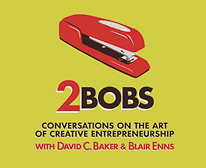
MOI: How and where do you find creative inspiration?
David: Well, in a work setting, I find it very inspirational to make a difference in client’s businesses…and to make significant money doing it. And the most creative part of my business life is carefully developing IP, and then monetizing it.
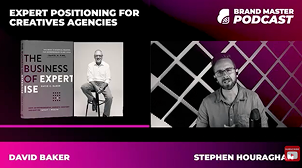
But most of my creative inspiration comes from my hobbies: fine woodworking, teaching motorcycle racing, flying airplanes and helicopters, long-distance shooting, and photography. I find each of them to be so immersive that I don’t think about work, and I’m drawn to the combination of art and science in each one.
I don’t read business books anymore because I find them boring. But I read a lot of historical fiction from all angles, concentrating on the 1790s through 1815. I also consume a lot of Substack newsletters and podcasts.
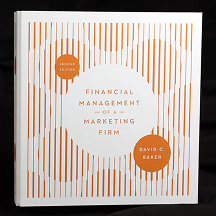
MOI: Is there a recent campaign or brand that's caught your eye? If so, why?
David: Well, I’m in my Dad joke era, so people will groan when they hear this, but I smile every time I see a Dr. Rick commercial from Progressive, where he coaches people how not to grow up to be like their Dad.


MOI: Out of all the projects you've worked on, what's one that really stood out to you and why?
David: I’ve worked intimately with 1,300 firms in about 45 countries, and some of them run together, but the ones I’m most proud of are the big turnaround that principals made—lacking confidence until I got ahold of them—finding their sea legs, making courageous decisions, and totally kicking ass. I get a couple of emails a week from clients following up from an engagement long ago who are now thriving, and their entrepreneurship makes me smile and pump my fist. I love great leaders who make a difference, often in the lives of their employees…and their clients, too.
MOI: How and where do you find creative inspiration?
David: Well, in a work setting, I find it very inspirational to make a difference in client’s businesses…and to make significant money doing it. And the most creative part of my business life is carefully developing IP, and then monetizing it.
But most of my creative inspiration comes from my hobbies: fine woodworking, teaching motorcycle racing, flying airplanes and helicopters, long-distance shooting, and photography. I find each of them to be so immersive that I don’t think about work, and I’m drawn to the combination of art and science in each one.
I don’t read business books anymore because I find them boring. But I read a lot of historical fiction from all angles, concentrating on the 1790s through 1815. I also consume a lot of Substack newsletters and podcasts.
MOI: Is there a recent campaign or brand that's caught your eye? If so, why?
David: Well, I’m in my Dad joke era, so people will groan when they hear this, but I smile every time I see a Dr. Rick commercial from Progressive, where he coaches people how not to grow up to be like their Dad.




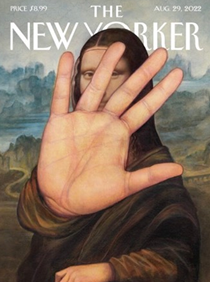
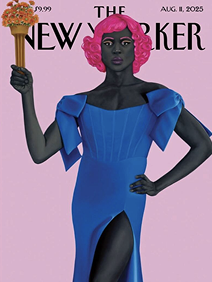
The New Yorker magazine was founded in 1925 by Harold Ross, who envisioned a sophisticated publication capturing metropolitan life with wit and honesty. Famously declaring it wouldn't be "edited for the old lady in Dubuque," the magazine established itself through pioneering long-form journalism, iconic cartoons, rigorous fact-checking, and literary fiction. It has maintained Ross's vision of intelligent, urbane coverage while evolving over nearly a century to remain one of the most influential publications in American journalism and literature.
Image and article courtesy © X
Read here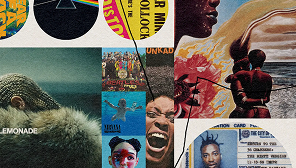
Rolling Stone celebrates the album cover as a vital art form that has evolved since the 1950s, presenting a list of the 100 best covers spanning genres from rap to punk. The article highlights how iconic covers—whether portraits like the Beatles crossing Abbey Road, abstract imagery like Pink Floyd's prism, or cultural statements like ODB's food stamps—have become inseparable from the music itself, created by legendary artists including Andy Warhol and Annie Leibovitz. These covers demonstrate the enduring fusion of visual art and recorded music, with the Beatles' Sgt. Pepper revolutionizing how musicians make visual statements about their artistic vision.
Image and article courtesy © X
Read here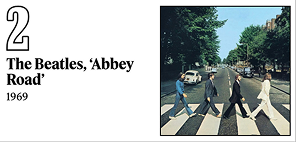
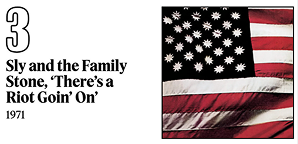

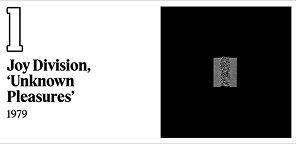



The New Yorker magazine was founded in 1925 by Harold Ross, who envisioned a sophisticated publication capturing metropolitan life with wit and honesty. Famously declaring it wouldn't be "edited for the old lady in Dubuque," the magazine established itself through pioneering long-form journalism, iconic cartoons, rigorous fact-checking, and literary fiction. It has maintained Ross's vision of intelligent, urbane coverage while evolving over nearly a century to remain one of the most influential publications in American journalism and literature.
Image and article courtesy © X


Rolling Stone celebrates the album cover as a vital art form that has evolved since the 1950s, presenting a list of the 100 best covers spanning genres from rap to punk. The article highlights how iconic covers—whether portraits like the Beatles crossing Abbey Road, abstract imagery like Pink Floyd's prism, or cultural statements like ODB's food stamps—have become inseparable from the music itself, created by legendary artists including Andy Warhol and Annie Leibovitz. These covers demonstrate the enduring fusion of visual art and recorded music, with the Beatles' Sgt. Pepper revolutionizing how musicians make visual statements about their artistic vision.
Image and article courtesy © X


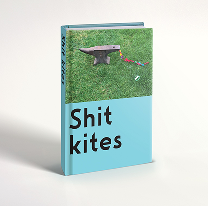
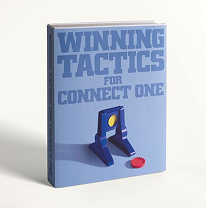
Rejected Books by Graham Johnson and Rob Hibbert features 50 covers for titles that should never exist, including How To Cook With Breast Milk, DIY Glory Holes and Shit Kites. Recently re-released with a dust jacket that emulates the style of a classic Penguin paperback, Rejected Books is the follow-up to the pair's previous title, Images You Should Not Masturbate To.
Image and article courtesy © Creative boom
Read here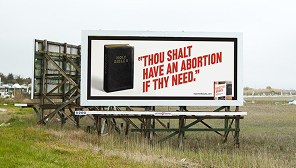
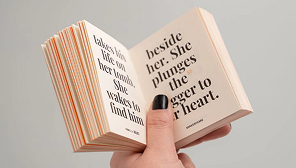

The Creative Circle Annual 2018 is an unusual book. It stands out. Literally. On your bookshelf, the book sticks out – awkwardly designed to be as disruptive as the creative found inside, it’s a glorious riot of awkward typography and bold ideas.
Image and article courtesy © Andy lockley
Read here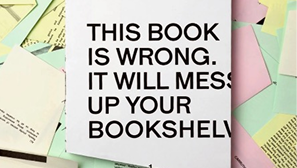
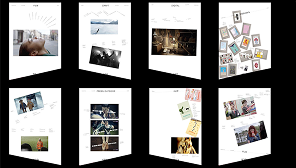
Epos is a modern-day translation of hefty classics, designed to expand the reader's literary horizons. On average, great sagas like Homer’s Odyssey are compressed from around 120,000 words to under 100. Visually, the book explores the contradictory relationship between big and small, featuring oversized typography crammed into a tiny format.
Image and article courtesy © Sputnik design team
Read here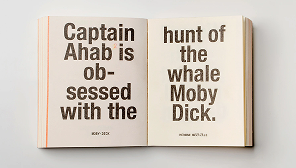



Rejected Books by Graham Johnson and Rob Hibbert features 50 covers for titles that should never exist, including How To Cook With Breast Milk, DIY Glory Holes and Shit Kites. Recently re-released with a dust jacket that emulates the style of a classic Penguin paperback, Rejected Books is the follow-up to the pair's previous title, Images You Should Not Masturbate To.
Image and article courtesy © Creative boom



The Creative Circle Annual 2018 is an unusual book. It stands out. Literally. On your bookshelf, the book sticks out – awkwardly designed to be as disruptive as the creative found inside, it’s a glorious riot of awkward typography and bold ideas.
Image and article courtesy © Andy lockley


Epos is a modern-day translation of hefty classics, designed to expand the reader's literary horizons. On average, great sagas like Homer’s Odyssey are compressed from around 120,000 words to under 100. Visually, the book explores the contradictory relationship between big and small, featuring oversized typography crammed into a tiny format.
Image and article courtesy © Sputnik design team

Turning Heads™
Why creative
thinking should be
a feature article.
(What? In this case…
is brand!)
Great magazines don't follow formulas. They curate, juxtapose unexpected ideas, and create space for connections to emerge. They approach content from multiple angles rather than one linear path.
That's precisely how Turning Heads™ works. Our divergent thinking methodology brings together unlikely combinations of expertise - not to follow a process, but to create new perspectives on your challenge.
Like a well-edited and designed magazine, we don't overwhelm with volume. We curate the right voices, create space for ideas to breathe, and look for unexpected connections others miss.
Because if you're still approaching problems the same way everyone else does, don't be surprised when your solutions look exactly like theirs. Maybe it’s time to edit the way you think.
(What? In this case… is brand!)


Despite what the naysayers would have you believe, print is NOT dead. And, in some cases, it’s not just surviving – it's evolving and thriving.
Take a look at Edward Enninful's 72 which launched with no advertising, positioned explicitly as a “collectible object.” The likes of i-D, SPIN, VI/NYL, Life and Saveur have returned… all legacy titles that are thriving with completely revised approaches. This revival mirrors vinyl's resurgence. And it's not just a form of nostalgia.
Research from MIT found that reading from print improves comprehension by 20-30% versus screens. The fact is that print acts as a cognitive detox in a world designed to fragment attention.
Then there’s something that behavioral economists call ‘the endowment effect’, which recognizes that we value things we physically own more than digital equivalents. Which makes sense, when neuroscience shows tactile interaction increases emotional connection.
In an era of digital abundance, tactile scarcity becomes something of a luxury. Think about that.
Print magazines are also rated up to 50% more trustworthy than online media - likely due to the long lead times and fact-checking that signal authenticity. Something that’s conspicuously absent in digital churn.
The reason print matters in 2025 has bugger all to do with nostalgia and everything to do with psychology, craft, and the human need for tactility and ownership.
For B2B, this presents genuine opportunity. When everything in your category is digital - be it whitepapers, eBooks or reports - maybe creating something physical becomes genuinely differentiated. Well-designed magazines aren't just content; they're cultural artefacts worth keeping for decades.
Image and article courtesy © Printweek, The Guardian, fashionCOW, Magalleria
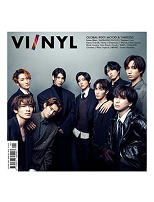
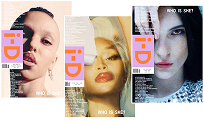


Despite what the naysayers would have you believe, print is NOT dead. And, in some cases, it’s not just surviving – it's evolving and thriving.

Take a look at Edward Enninful's 72 which launched with no advertising, positioned explicitly as a “collectible object.” The likes of i-D, SPIN, VI/NYL, Life and Saveur have returned… all legacy titles that are thriving with completely revised approaches. This revival mirrors vinyl's resurgence. And it's not just a form of nostalgia.
Research from MIT found that reading from print improves comprehension by 20-30% versus screens. The fact is that print acts as a cognitive detox in a world designed to fragment attention.

Then there’s something that behavioral economists call ‘the endowment effect’, which recognizes that we value things we physically own more than digital equivalents. Which makes sense, when neuroscience shows tactile interaction increases emotional connection.
In an era of digital abundance, tactile scarcity becomes something of a luxury. Think about that.
Print magazines are also rated up to 50% more trustworthy than online media - likely due to the long lead times and fact-checking that signal authenticity. Something that’s conspicuously absent in digital churn.

The reason print matters in 2025 has bugger all to do with nostalgia and everything to do with psychology, craft, and the human need for tactility and ownership.

For B2B, this presents genuine opportunity. When everything in your category is digital - be it whitepapers, eBooks or reports - maybe creating something physical becomes genuinely differentiated. Well-designed magazines aren't just content; they're cultural artefacts worth keeping for decades.
Image and article courtesy © Printweek, The Guardian, fashionCOW, Magalleria

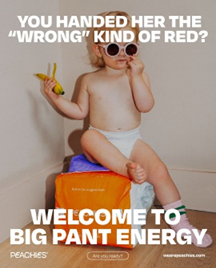


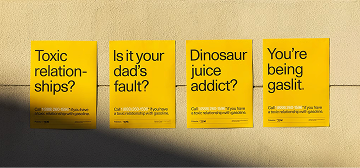
Polestar isn’t mincing words with its new guerrilla marketing campaign. The Swedish EV manufacturer – which describes itself as an electric performance brand – has rolled out an eye-catching OOH activation that likens combustion engine dependency to a toxic relationship – one it says it’s time to walk away from.
Image and article courtesy © Creative review
Read hereThis new campaign from nappy brand Peachies leans into the toddler years, where nappies are vital, but scenes are chaotic. It uses a combination of clever copy and authentic-seeming photography to sum up the humour and frustration that toddlers can cause.
Image and article courtesy © Creative review
Read hereThis whisky brand makes use of punchy, head-turning copy to give people a little giggle. A clever, funny nod to their Scottish heritage is sure to make this brand one to remember.
Image courtesy © Dandad
Read here
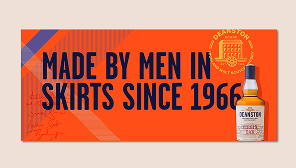
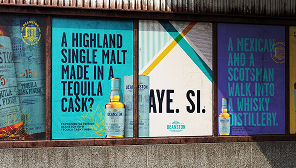



Polestar isn’t mincing words with its new guerrilla marketing campaign. The Swedish EV manufacturer – which describes itself as an electric performance brand – has rolled out an eye-catching OOH activation that likens combustion engine dependency to a toxic relationship – one it says it’s time to walk away from.
Image and article courtesy © Creative review


This new campaign from nappy brand Peachies leans into the toddler years, where nappies are vital, but scenes are chaotic. It uses a combination of clever copy and authentic-seeming photography to sum up the humour and frustration that toddlers can cause.
Image and article courtesy © Creative review


This whisky brand makes use of punchy, head-turning copy to give people a little giggle. A clever, funny nod to their Scottish heritage is sure to make this brand one to remember.
Image courtesy © Dandad

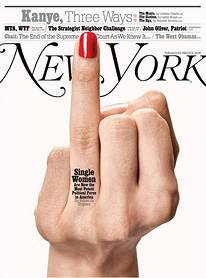

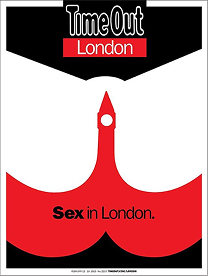
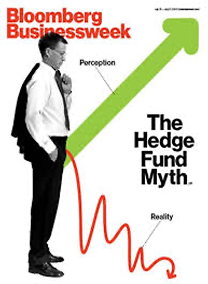
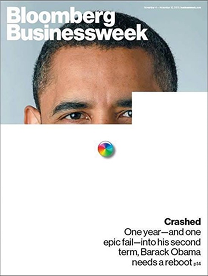


Magazines have long been a canvas for some of the best, most iconic design work. Here’s a celebration of creative covers from Coverjunkie.
Images courtesy © Cover Junkie
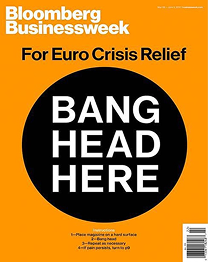
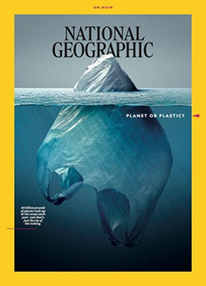
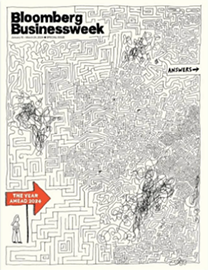
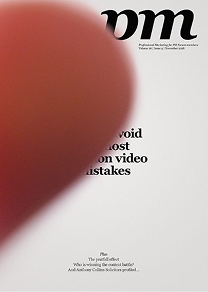
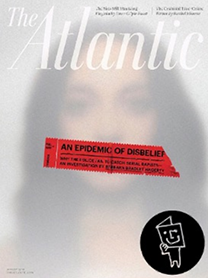

Magazines have long been a canvas for some of the best, most iconic design work. Here’s a celebration of creative covers from Coverjunkie.
Images courtesy © Cover Junkie












NBook cover trends don’t tend to change too much year to year. But with the cover being such an important part of drawing people into the story (and actually buying the book), it’s something you need to get right.
And when around 2.4 million new books are published each year, you need to do something special to make yours stand out.
So, here are some of the biggest book cover trends of 2025. See them all here.
Article courtesy © 10 Book Cover Design Trends that Await Us in 2025 – MIBLART
Typography

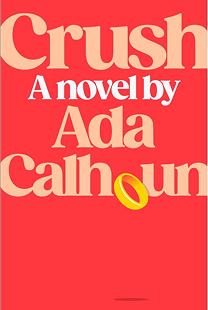
Abstract
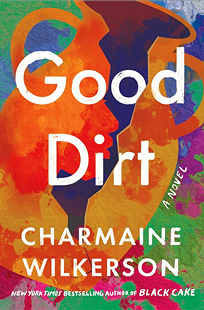
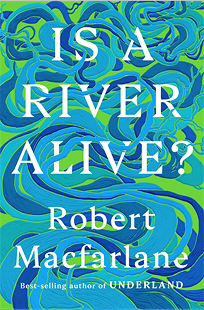
Collage

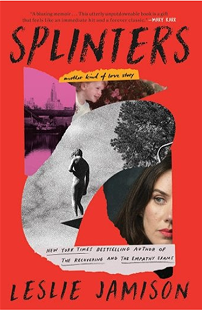

NBook cover trends don’t tend to change too much year to year. But with the cover being such an important part of drawing people into the story (and actually buying the book), it’s something you need to get right.
And when around 2.4 million new books are published each year, you need to do something special to make yours stand out.
So, here are some of the biggest book cover trends of 2025. See them all here.
Article courtesy © 10 Book Cover Design Trends that Await Us in 2025 – MIBLART
Typography


Abstract


Collage


Need inspiration for your next campaign, or want to chat with our global Creative
Team?
creative@moi-global.com
Get those creative juice flowing with head-turning
examples of
creativity, straight to your inbox.